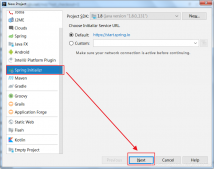spring整合jdbc
spring提供了很多模板整合dao技术
| orm持久化技术 | 模板类 |
|---|---|
| jdbc | org.springframework.jdbc.core.jdbctemplate |
| hibernate3.0 | org.springframework.orm.hiberate3.hibernatetemplate |
| ibatis(mybatis) | org.springframework.orm.sqlmapclienttemplate |
| jpa | org.springframework.orm.jpa.jpatemplate |
spring中提供了一个可以操作数据库的对象.对象封装了jdbc技术.
|
1
2
3
4
5
6
7
8
9
10
11
12
13
14
|
// jdbctemplate => jdbc模板对象// 与dbutils中的queryrunner非常相似.// 0 准备连接池combopooleddatasource datasource = new combopooleddatasource();datasource.setdriverclass("com.mysql.jdbc.driver");datasource.setjdbcurl("jdbc:mysql:///hibernate_32");datasource.setuser("root");datasource.setpassword("1234");// 1 创建jdbc模板对象jdbctemplate jt = new jdbctemplate();jt.setdatasource(datasource);// 2 书写sql,并执行string sql = "insert into t_user values(null,'rose') ";jt.update(sql); |
步骤
1.导包
- 基础包4 + 2
- spring-test
- spring-aop
- junit4类库
- 新增c3p0连接池jdbc驱动包
- spring-jdbc包
- spring-tx事务包
2.准备数据库
本地数据库和表
3.书写dao
|
1
2
3
4
5
6
7
8
9
10
11
12
13
14
15
16
17
18
19
20
21
22
23
24
25
26
27
28
29
30
31
32
33
34
35
36
37
38
39
40
41
42
43
44
45
46
47
48
49
50
51
|
// 使用jdbc模板实现增删改查public class userdaoimpl extends jdbcdaosupport implements userdao { @override public void save(user u) { string sql = "insert into t_user values(null,?) "; super.getjdbctemplate().update(sql, u.getname()); } @override public void delete(integer id) { string sql = "delete from t_user where id = ? "; super.getjdbctemplate().update(sql,id); } @override public void update(user u) { string sql = "update t_user set name = ? where id=? "; super.getjdbctemplate().update(sql, u.getname(),u.getid()); } @override public user getbyid(integer id) { string sql = "select * from t_user where id = ? "; return super.getjdbctemplate().queryforobject(sql,new rowmapper<user>(){ @override public user maprow(resultset rs, int arg1) throws sqlexception { user u = new user(); u.setid(rs.getint("id")); u.setname(rs.getstring("name")); return u; }}, id); } @override public int gettotalcount() { string sql = "select count(*) from t_user "; integer count = super.getjdbctemplate().queryforobject(sql, integer.class); return count; } @override public list<user> getall() { string sql = "select * from t_user "; list<user> list = super.getjdbctemplate().query(sql, new rowmapper<user>(){ @override public user maprow(resultset rs, int arg1) throws sqlexception { user u = new user(); u.setid(rs.getint("id")); u.setname(rs.getstring("name")); return u; }}); return list; }} |
4.spring配置
|
1
2
3
4
5
6
7
8
9
10
11
12
13
14
15
16
17
18
19
20
21
22
23
24
25
26
27
|
<!-- 指定spring读取db.properties配置 --><context:property-placeholder location="classpath:db.properties" /><!-- 1.将连接池放入spring容器 --><bean name="datasource" class="com.mchange.v2.c3p0.combopooleddatasource" > <property name="jdbcurl" value="${jdbc.jdbcurl}" ></property> <property name="driverclass" value="${jdbc.driverclass}" ></property> <property name="user" value="${jdbc.user}" ></property> <property name="password" value="${jdbc.password}" ></property></bean><!-- 2.将jdbctemplate放入spring容器 --><bean name="jdbctemplate" class="org.springframework.jdbc.core.jdbctemplate" > <property name="datasource" ref="datasource" ></property></bean><!-- 3.将userdao放入spring容器 --><bean name="userdao" class="cn.zhli13.jdbctemplate.userdaoimpl" > <property name="jt" ref="jdbctemplate" ></property></bean>// 若userdao类继承了jdbcdaosupport,则无需将jdbctemplate注入到容器中,省略第二步,第三步改为 <!-- 3.将userdao放入spring容器 --><bean name="userdao" class="cn.zhli13.jdbctemplate.userdaoimpl" > <property name="datasource" ref="datasource" ></property></bean> |
spring中aop事务
事务
事务特性:acid
事务并发问题:脏读、不可重复读、幻读
事务的隔离级别:1 读未提交、2 读已提交、4 可重复读、8 串行化
spring封装了事务管理代码
事务操作:1、打开事务、2、提交事务、3、回滚事务
事务操作对象
因为在不同平台,操作事务的代码各不相同.spring提供了一个接口
platformtransactionmanager 接口
- datasourcetransactionmanager
- hibernatetransitionmanager
注意:在spring中玩事务管理.最为核心的对象就是transactionmanager对象
spring管理事务的属性介绍
事务的隔离级别:1 读未提交、2 读已提交、4 可重复读、8 串行化
是否只读: true只读 false可操作
事务的传播行为:决定业务方法之间调用,事务应该如何处理
* 保证同一个事务中
propagation_required 支持当前事务,如果不存在 就新建一个(默认、推荐99.99%用这种)
propagation_supports 支持当前事务,如果不存在,就不使用事务
propagation_mandatory 支持当前事务,如果不存在,抛出异常* 保证没有在同一个事务中
propagation_requires_new 如果有事务存在,挂起当前事务,创建一个新的事务
propagation_not_supported 以非事务方式运行,如果有事务存在,挂起当前事务
propagation_never 以非事务方式运行,如果有事务存在,抛出异常
propagation_nested 如果当前事务存在,则嵌套事务执行
spring管理事务方式
|
1
2
3
4
5
6
7
8
9
10
11
12
13
14
15
16
17
|
// 编码式// 1.将核心事务管理器配置到spring容器<!-- 事务核心管理器,封装了所有事务操作. 依赖于连接池 --><bean name="transactionmanager" class="org.springframework.jdbc.datasource.datasourcetransactionmanager" > <property name="datasource" ref="datasource" ></property></bean>// 2.配置transactiontemplate模板<!-- 事务模板对象 --><bean name="transactiontemplate" class="org.springframework.transaction.support.transactiontemplate" > <property name="transactionmanager" ref="transactionmanager" > </property></bean>// 3.将事务模板注入service<!-- 3.service--><bean name="accountservice" class="cn.itcast.service.accountserviceimpl" > <property name="ad" ref="accountdao" ></property> <property name="tt" ref="transactiontemplate" ></property></bean> |
xml配置(aop)
|
1
2
3
4
5
6
7
8
9
10
11
12
13
14
15
16
17
18
19
20
21
22
23
24
25
26
27
28
29
30
31
32
33
34
35
|
// 1.导包 // aop、aspect、aopliance、aspect.weaver // 2.导入新的约束(tx) // beans: 最基本、context:读取properties配置、aop:配置aop、tx:配置事务通知 // 3.配置通知 <!-- 配置事务通知 --><tx:advice id="txadvice" transaction-manager="transactionmanager" > <tx:attributes> <!-- 以方法为单位,指定方法应用什么事务属性 isolation:隔离级别 propagation:传播行为 read-only:是否只读 --> <tx:method name="save*" isolation="repeatable_read" propagation="required" read-only="false" /> <tx:method name="persist*" isolation="repeatable_read" propagation="required" read-only="false" /> <tx:method name="update*" isolation="repeatable_read" propagation="required" read-only="false" /> <tx:method name="modify*" isolation="repeatable_read" propagation="required" read-only="false" /> <tx:method name="delete*" isolation="repeatable_read" propagation="required" read-only="false" /> <tx:method name="remove*" isolation="repeatable_read" propagation="required" read-only="false" /> <tx:method name="get*" isolation="repeatable_read" propagation="required" read-only="true" /> <tx:method name="find*" isolation="repeatable_read" propagation="required" read-only="true" /> <tx:method name="transfer" isolation="repeatable_read" propagation="required" read-only="false" /> </tx:attributes></tx:advice>// 4.配置将通知织入目标<!-- 配置织入 --><aop:config > <!-- 配置切点表达式 --> <aop:pointcut expression="execution(* cn.zhli13.service.*serviceimpl.*(..))" id="txpc"/> <!-- 配置切面 : 通知+切点 advice-ref:通知的名称 pointcut-ref:切点的名称 --> <aop:advisor advice-ref="txadvice" pointcut-ref="txpc" /></aop:config> |
注解配置(aop)
|
1
2
3
4
5
6
7
8
9
10
11
|
// 1.导包(如xml配置一样)// 2.导入约束(同上)// 3.开启注解管理事务<!-- 开启使用注解管理aop事务 --><tx:annotation-driven/>// 4.使用注解@transactional(isolation=isolation.repeatable_read,propagation=propagation.required,readonly=true)public class accountserviceimpl implements accountservice {@transactional(isolation=isolation.repeatable_read,propagation=propagation.required,readonly=false)public void transfer(final integer from,final integer to,final double money) { |
以上就是本文的全部内容,希望对大家的学习有所帮助,也希望大家多多支持服务器之家。
原文链接:https://segmentfault.com/a/1190000015822794














